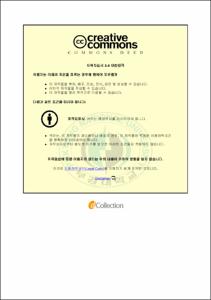Effects of Hydrogen Peroxide, Chloramine-T and Guaiacol on Nitrification Efficiency in Small-Scale Recirculating Systems
- Abstract
- The present experiments were conducted to evaluate the effects of different levels of hydrogen peroxide, chloramine-T and guaiacol on nitrification efficiency of biofilters in small scale freshwater and seawater recirculating systems at three different water temperatures. The impairment of nitrification efficiency of biofilters by each of these chemotherapeutants was evaluated at 25, 20 and 15oC in freshwater, 25 and 20oC in seawater recirculating systems over short (24 h) and long periods (stabilized period). Each recirculating system consisted of a circular tank containing 200 L of water, a biofilter cylinder with polystyrene microbead, a pump and a water temperature controller. In each experiment, synthetic wastewater was supplied to the circular tank of each of eight systems to give the ammonia loading rate of 25 g m-3 d-1. At the beginning of the experiment the water in each of the eight circular tanks was treated to contain one of four concentrations (0, 50, 100 or 150 ppm for hydrogen peroxide; 0, 10, 20 or 30 ppm for chloramine-T and 10, 30 or 50 ppm for guaiacol) of the chemotherapeutant under experiment in duplicates. The exposure time of the chemoterapeutants was 1 hour and nitrification efficiency of each biofilter was measured at 15 min, 30 min, 1, 3, 6, 9, 12, 18 and 24 h within first day and once a day for the next 25 days. The 50, 100 and 150 ppm of hydrogen peroxide showed impairment on nitrification efficiency of the biofilters significantly by the range of 12 ? 27, 34 ? 49 and 47 ? 74%, respectively. The 10 ppm of chloramine-T had no significant effect to nitrification efficiency of the biofilters, whereas the 20 and 30 ppm of chloramine-T impaired nitrification efficiency of the biofilters by 21 ? 37 and 38 ? 41%, respectively. Furthermore, the 10 ppm of guaiacol had no significant effect to nitrification efficiency of the biofilters, while the 30 and 50 ppm of guaiacol showed impairment on nitrification efficiency of the biofilters by 27 ? 43 and 50 ? 75%, respectively. These effects occurred because the chemotherapeutants inhibit nitrifying bacteria which caused decreasing of nitrification efficiency.
- Issued Date
- 2012
- Awarded Date
- 2012. 2
- Type
- Dissertation
- Publisher
- PUKYONG NATIONAL UNIVERSITY
- Department
- 대학원 수산생물학과
- Advisor
- PROFESSOR JO JAE-YOON
- Table Of Contents
- Contents i
Abstract iii
List of Tables v
List of Figures ix
I. General Introduction 1
1.1. Recirculating aquaculture system and biofilter 1
1.2. Disinfection management 3
1.3. Objectives 5
II. Materials and Methods 7
2.1. System design 7
2.2. Biofilter media 7
2.3. Ammonia loading rates 7
2.4. Biofilter conditioning and operation 8
2.5. Water sampling 9
2.6. Water quality measurements 9
2.7. Statistical analysis 10
III. Results 13
3.1. Nitrification efficiency in freshwater 13
3.1.1. Nitrification efficiency at 25oC 13
3.1.2. Nitrification efficiency at 20oC 26
3.1.3. Nitrification efficiency at 15oC 38
3.1.4. Comparison of TAN concentration in freshwater 40
3.2. Nitrification efficiency in seawater 52
3.2.1. Nitrification efficiency at 25oC 52
3.2.2. Nitrification efficiency at 20oC 65
3.2.3. Comparison of TAN concentration in seawater 68
IV. Discussions 80
V. Conclusions 83
VI. Acknowledgement 84
VII. References 85
- Degree
- Doctor
- Files in This Item:
-
-
Download
 Effects of Hydrogen Peroxide, Chloramine-T and Guaiacol on Nitrification Efficiency in Small-Scale R.pdf
기타 데이터 / 900.88 kB / Adobe PDF
Effects of Hydrogen Peroxide, Chloramine-T and Guaiacol on Nitrification Efficiency in Small-Scale R.pdf
기타 데이터 / 900.88 kB / Adobe PDF
-
Items in Repository are protected by copyright, with all rights reserved, unless otherwise indicated.